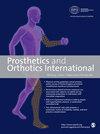使用部分义手:临床医生的经验调查
IF 0.8
4区 医学
Q4 ORTHOPEDICS
引用次数: 0
摘要
背景:部分缺失手部功能的人在完成日常任务和充分参与社会生活方面常常面临挑战。假肢装置可提供一系列好处,包括改善功能或外观。然而,使用者可能会拒绝使用部分缺失的手部装置。此外,目前还缺乏证据证明影响专为此类人群设计的义肢临床处方的方法或因素。调查目的调查的目的是了解部分手部义肢的处方者以及影响义肢选择的因素。研究设计:在 Qualtrics 上设计了 36 个项目的匿名在线调查,并分发给临床医生。调查包含多项选择题、李克式问题、封闭式问题和开放式问题。调查方法通过 Qualtrics 和 Microsoft Excel 进行定量和定性分析。结果来自不同职业的 37 名临床医生参与了调查。大多数人都认为结果测量对于评估部分手部义肢很有用,但也提出了改进的余地。虽然临床医生使用各种结果测量工具,但缺乏专门针对这一人群的工具。在为使用者选择假肢时,现有功能、职业和爱好等因素被认为是重要因素。资金影响了可供处方的部分手部装置的范围。结论处方过程涉及多个利益相关者。在决策过程中必须考虑各种因素,包括资金和用户满意度。目前还缺乏对这一人群进行假肢评估的具体结果测量方法。不过,在最终处方之前提供借用装置会产生积极的结果。本文章由计算机程序翻译,如有差异,请以英文原文为准。
Working with partial hand prostheses: An investigation into experiences of clinicians
Background: Individuals living with partial hand absence often face challenges in performing everyday tasks and fully participating in society. Prosthetic devices offer a range of benefits, including improved functionality or cosmesis. However, partial hand devices can be rejected by users. In addition, there is a lack of evidence that establishes methods or factors influencing the clinical prescription of prosthetics specifically designed for this population. Objectives: The objectives of the investigation were to gain understanding of who is prescribing partial hand prosthetics and the factors which influence device selection. Study Design: A 36-item anonymous online survey was designed on Qualtrics and distributed to clinicians. The survey contained multiple-choice, Likert-type, closed, and open-ended questions. Methods: Quantitative and qualitative analyses were performed on Qualtrics and Microsoft Excel. Results: Thirty-seven clinicians from various occupations participated. The majority agreed that outcome measures are useful for assessing partial hand prosthetics but suggested room for improvement. Although clinicians use various outcome measurement tools, there is a lack of tools specifically tailored to this population. Factors such as existing function, occupation, and hobbies were identified as important when selecting prosthetic devices for users. Funding influenced the range of partial hand devices available for prescription. Conclusions: The prescription process involves multiple stakeholders. Various factors, including funding and user satisfaction, must be considered in the decision-making process. There is a lack of specific outcome measures recommended for evaluating prosthetics in this population. However, providing loaner units before final prescription yields positive outcomes.
求助全文
通过发布文献求助,成功后即可免费获取论文全文。
去求助
来源期刊
CiteScore
2.30
自引率
13.30%
发文量
208
审稿时长
6-12 weeks
期刊介绍:
Prosthetics and Orthotics International is an international, multidisciplinary journal for all professionals who have an interest in the medical, clinical, rehabilitation, technical, educational and research aspects of prosthetics, orthotics and rehabilitation engineering, as well as their related topics.

 求助内容:
求助内容: 应助结果提醒方式:
应助结果提醒方式:


